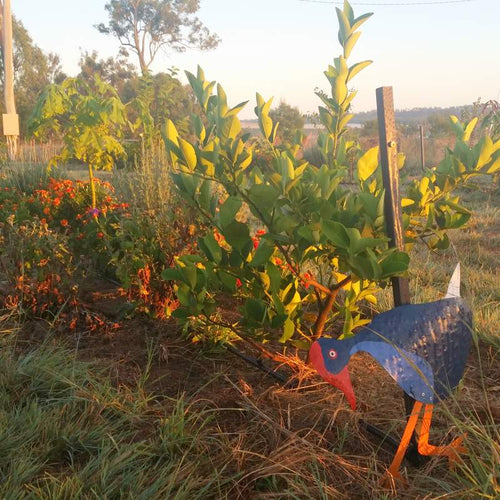How I use herbs - borage
Borage (Borago officinalis L, not to be confused with broage) is a herbaceous annual leafy herb, native of the Mediterranean region. While borage is a very old garden plant, more recently is has been cultivated to harvest the seed oil, which is apparently high in gamma-linolenic acid. I grow borage to attract bees, to make herbal tea from the leaves and to occasionally surprise Pete with flowers in his work lunch.
How I grow borage
Borage grows VERY easily. I planted seeds by scattering them around the garden once, a couple of years ago, and now I just pull out unwanted borage plants and leave a few to prosper in different areas of the garden. I have harvested seeds to send to people for seed swaps, and I cannot imagine how they are harvested on an industrial scale. The seeds are tiny, four per flower, and they dislodge very easily! In some climates borage doesn’t grow and flower through winter, but I can grow it all year in the sub-tropics as long as it has enough water in dry periods.
How I use borage
All parts of the borage plant can be used, including the leaves, flowers and seeds. I dry leaves and flowers to add to herbal tea mixtures (Borage tea is said to help induce psychic powers, although I can’t confirm this claim!). I also pick fresh leaves (the smaller ones are less prickly) to chop and add to salads (and the flowers can be scattered on top, they are slightly sweet). It can also be cooked.
Medicinally, borage is used for gastrointestinal, respiratory and car diovascular disorders. It is also used for skin conditions, and I use it to make an infused oil for salves and soap making. It can also be used to make tinctures. I am interested in the seed oil, but I think you would have to eat an awful lots of seeds to get any benefit!
In the garden, borage is a companion plant to legumes, spinach, brassicas, strawberries and tomatoes (although I just let it come up everywhere).
Bees love borage because it produces so much nectar, in fact it is rated as one of the top plants for producing nectar and pollen throughout the year
Do you grow borage? Do you use borage? What about borage seed oil?
How I grow borage
Borage grows VERY easily. I planted seeds by scattering them around the garden once, a couple of years ago, and now I just pull out unwanted borage plants and leave a few to prosper in different areas of the garden. I have harvested seeds to send to people for seed swaps, and I cannot imagine how they are harvested on an industrial scale. The seeds are tiny, four per flower, and they dislodge very easily! In some climates borage doesn’t grow and flower through winter, but I can grow it all year in the sub-tropics as long as it has enough water in dry periods.
How I use borage
All parts of the borage plant can be used, including the leaves, flowers and seeds. I dry leaves and flowers to add to herbal tea mixtures (Borage tea is said to help induce psychic powers, although I can’t confirm this claim!). I also pick fresh leaves (the smaller ones are less prickly) to chop and add to salads (and the flowers can be scattered on top, they are slightly sweet). It can also be cooked.
Medicinally, borage is used for gastrointestinal, respiratory and car diovascular disorders. It is also used for skin conditions, and I use it to make an infused oil for salves and soap making. It can also be used to make tinctures. I am interested in the seed oil, but I think you would have to eat an awful lots of seeds to get any benefit!
In the garden, borage is a companion plant to legumes, spinach, brassicas, strawberries and tomatoes (although I just let it come up everywhere).
Bees love borage because it produces so much nectar, in fact it is rated as one of the top plants for producing nectar and pollen throughout the year
Do you grow borage? Do you use borage? What about borage seed oil?























Leave a comment